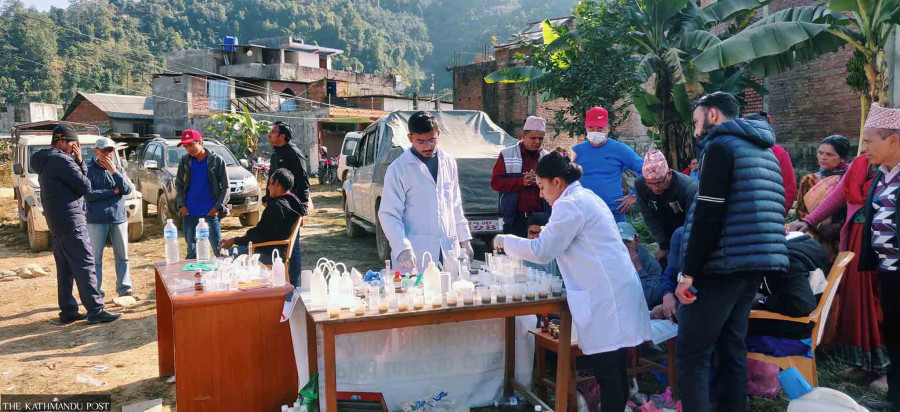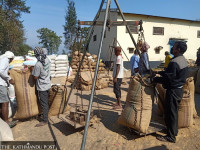Money
Excessive use of chemical fertilisers lowers paddy output in Parbat
Farmers have been using a large amount of chemical fertilisers to increase their agricultural output.
Agandhar Tiwari
Until about a decade ago, Uma Basyal used to harvest around 850 kilograms of paddy from her fields in Paiyun Rural Municipality Ward 7, Parbat, a district in western Nepal. But this year, her farm’s paddy output declined to around 504 kg.
Worried by the drop in paddy output, Basyal took a soil sample from her fields to test it at a camp organised by the district’s Agriculture Knowledge Centre last week.
The results showed that the soil productivity had declined due to the excessive use of chemical fertilisers over the years.
“The agricultural technicians told me that I need to use 250 kg of agricultural lime in 10 ropani fields,” said Basyal. “We had stopped using the manure in the fields and were not aware about declining soil productivity.”
Farmers like Basyal who have been using a large amount of chemical fertilisers to increase their agricultural output in the area are now searching for ways to improve their soil’s productivity.
According to the technicians, during the camp, the Agriculture Knowledge Centre tested the pH value, and the level of Nitrogen, Phosphorus and Potash of 102 soil samples collected from seven wards of the rural municipality.
“The excessive level of chemical fertiliser was seen in most of the samples,” said Manita Thapa, chief of the centre. “This situation would not have come up, if the farmers had used the right amount of agricultural lime and potash along with the chemical fertilisers, such as urea and diammonium phosphate,” Thapa added.
“The soil productivity can be improved by using the organic and chemical fertilisers, as well as the agricultural lime in the right quantity,” Thapa added.
“While 25 percent of the soil samples had high acidic levels, 75 percent were neutral,” said Sandip Tiwari, an agricultural technician at the rural municipality. “Similarly, 95 percent samples had low nitrogen and 80 percent had low phosphorus levels.”
Ram Prasad Sharma, a farmer from Paiyun-5, said that such camps should be organised every year. “I am going to follow the recommendations of the technicians.”
“I wish I knew the importance of soil testing earlier,” added Homlal Bhusal, another farmer.
According to the Agriculture Knowledge Centre, though they have brought into operation a lab for carrying out soil tests inside their own premises, the farmers have not been too keen on visiting it.




 10.12°C Kathmandu
10.12°C Kathmandu.jpg)













